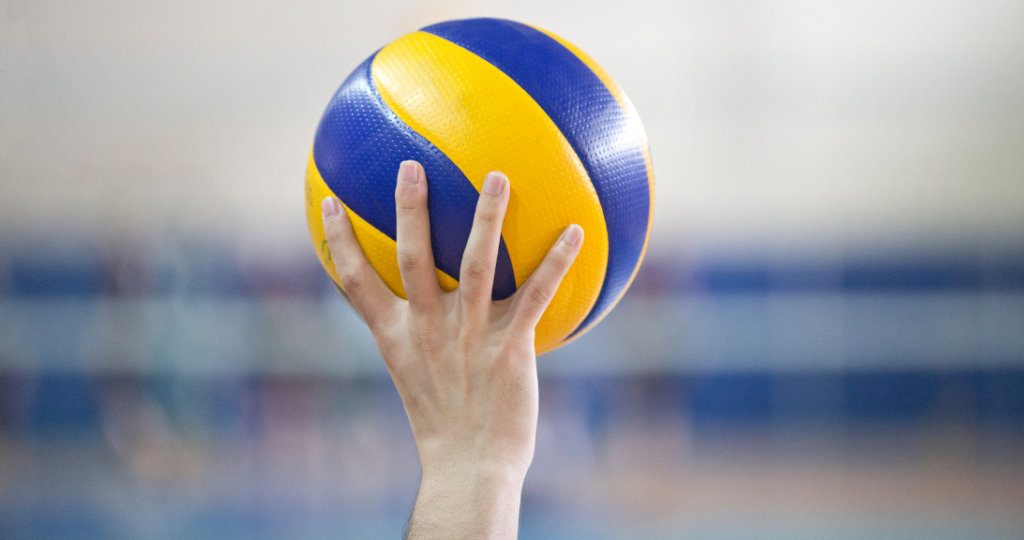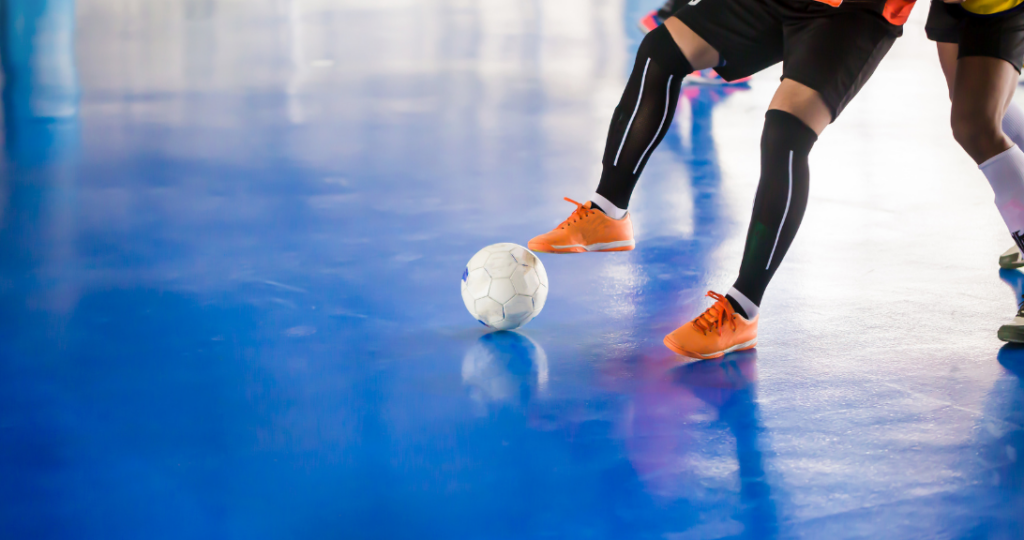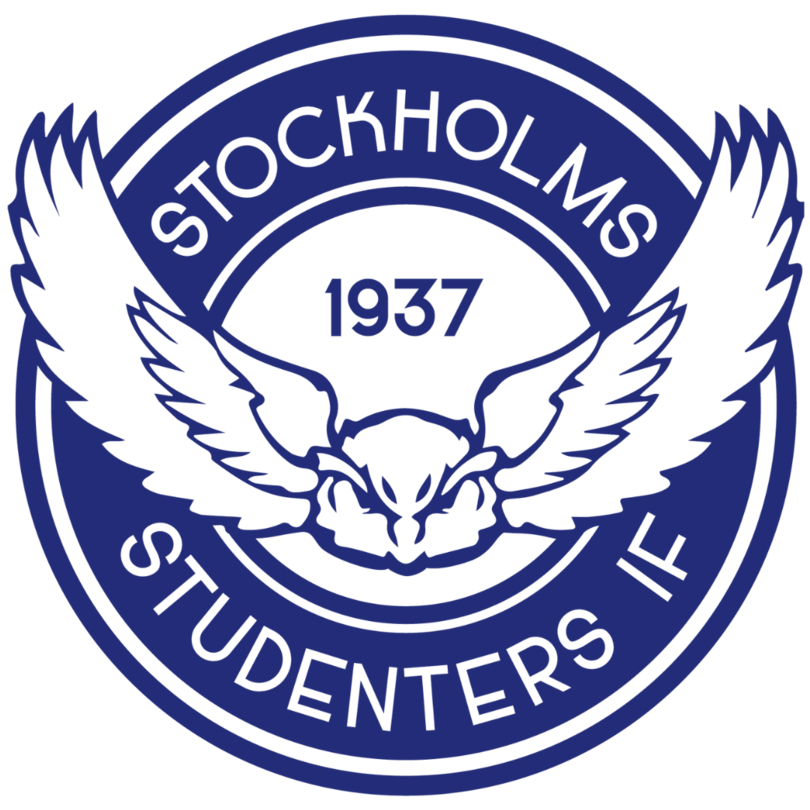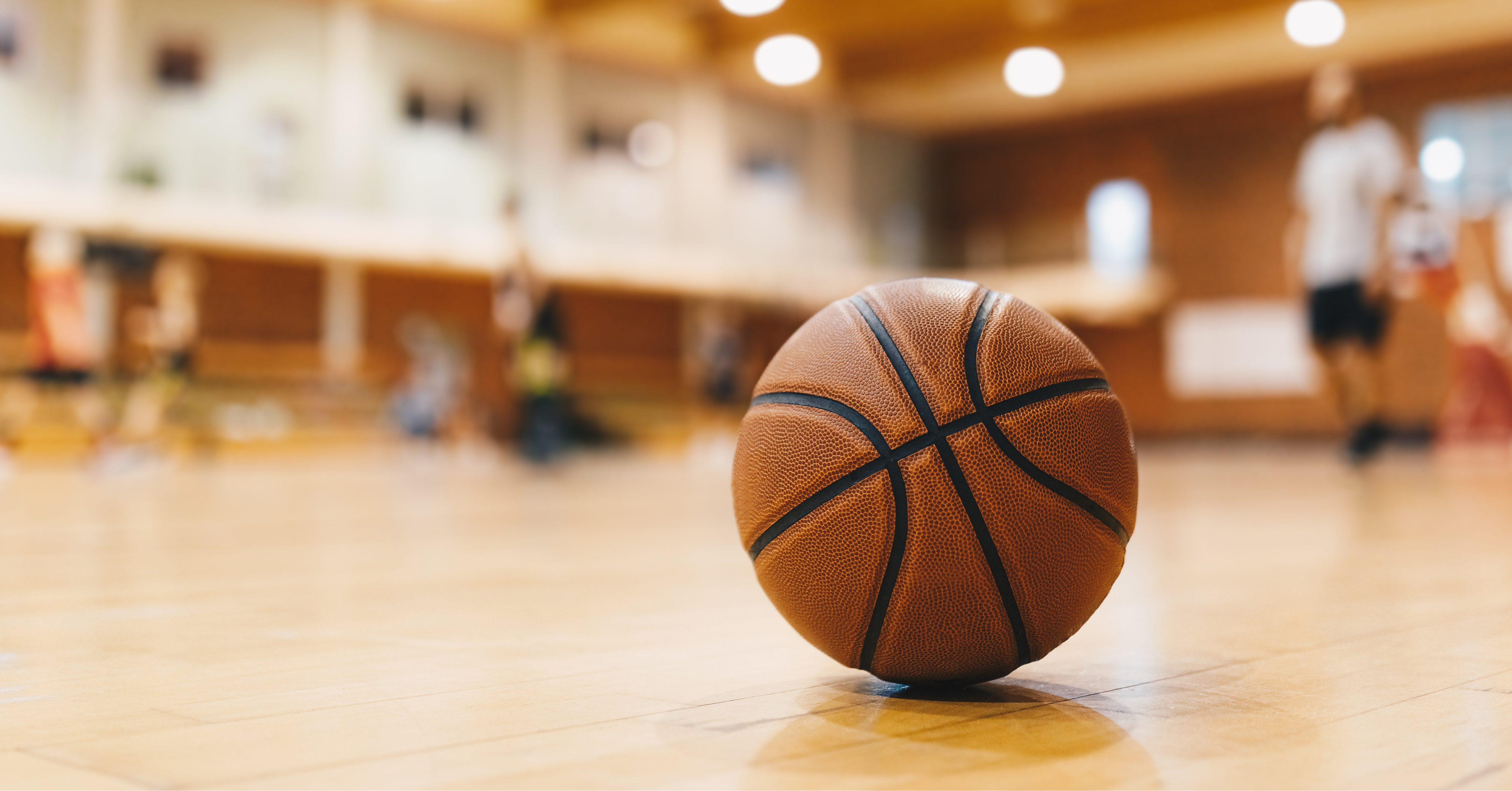SSIF – Stockholm Students’ Sports Club offers an extensive range of weekly instructor-led sports and group fitness training sessions, catering to a wide variety of interests and skill levels. From volleyball, gymnastics, badminton, basketball, and football to table tennis, swimming, yoga, and more, our diverse selection ensures that there’s something for everyone. Located at the Frescati Sports Center near Stockholm University, SSIF provides easy access to quality training facilities close to the city center and many university facilities.
Founded to serve the student community in 1937, SSIF maintains a strong connection to student life while welcoming anyone over the age of 18, regardless of prior experience. Whether you’re a student looking to balance academics with physical activity or a non-student seeking a supportive and fun fitness environment, SSIF offers a welcoming space for all. Our club is designed to help you stay active, explore new sports, and find joy in fitness.
All classes are led by English-speaking instructors who are there to guide and motivate you, ensuring that you feel confident and supported in whichever sport or exercise you choose. For more information on training options, memberships, and activities, check out the main menu. Below, you will find more details about SSIF’s history, values, and much more.
1937 – The Founding of Stockholm Students’ Sports Club (SSIF)
On March 16, 1937, the Stockholm Students’ Sports Club (Stockholms Studenters Idrottsförening, SSIF) was established. One of the founding members and the club’s chairman for its first decade was Sven Thofelt, a renowned modern pentathlete. The Stockholm Student Union Federation was represented on SSIF’s board by two members. The club’s activities were funded by allocating one SEK from each student’s union fee to SSIF. The association’s motto was:
“Physical education in some form for all students in Stockholm”
In practice, however, SSIF’s primary focus was on competitive sports. First, SSIF was represented by teams and individuals in competitions and league systems at the district, national, and international levels. Second, SSIF organized the Stockholm Academic Championships in athletics, along with various sports competitions between the city’s different universities, and facilitated competitive exchanges with other student unions. For instance, SSIF fielded teams in the Stockholm leagues for bandy, football, and handball while also organizing internal leagues among the different universities in these sports. In fencing, where talented students excelled, the association aimed to establish international representation.
According to SSIF’s program for the 1937/38 academic year, the association focused on the following sports: bandy, athletics, fencing, handball, orienteering (considered particularly suitable for academics), swimming, skiing, tennis, and women’s sports. The latter then included gymnastics and basketball. Once a year, all students were given the opportunity to participate in sports during Student Sports Day, which was described in the 1937/38 program as:
“A promotional competition where all students can participate.”
Competitions were held at Östermalm Sports Ground during the 1930s and 1940s. Throughout the 1940s and 1950s, SSIF’s focus remained consistent, with competitive sports – especially athletics – remaining central to its activities. However, the association expanded its program to include new sports such as table tennis, boxing, wrestling, modern pentathlon, ice hockey, and badminton. During the 1950s, the term “women’s sports” fell out of use, and female students were increasingly expected to participate in sports like badminton.
The 1960s – Winds of Change Begin to Blow
In the 1960s, SSIF underwent a significant transformation in its focus. According to the statutes adopted by the SSCO Student Council in November 1967, SSIF’s purpose was defined as follows:
“To primarily promote interest in and provide opportunities for exercise among students at SSCO-affiliated unions, while also advocating for increased opportunities for physical activity. Secondarily, to support competitive sports and necessary training programs.”
While there remained space for competitive sports – athletes like Ronnie Hellström, a long-time goalkeeper for the Swedish national football team, continued to compete in academic championships – the organization was clearly embracing a new direction.
The 1970s – A Shift Toward Recreational Sports
In 1967, a parliamentary decision enabled SSIF to receive state funding for recreational activities aimed at students. In 1973, SSIF also merged with Stockholm University Student Union’s Sports Committee (SUSIDUS), which became part of SSIF. Since then, Stockholm University’s student union has not pursued independent sports activities, instead fostering a close collaboration with SSIF. As a result, the focus of SSIF’s activities underwent a dramatic transformation during the late 1960s and early 1970s.
The 1980s – Inauguration of Frescatihallen
Throughout the 1980s, SSIF fully embraced a new policy, shifting its focus from elite sports to becoming a “recreational sports association.” The guiding principle was “Sports for All,” as outlined in SSCO’s 1980 annual report:
“Through student sports, we aim to encourage students and provide opportunities for continuous exercise, closely integrated with preventive student healthcare.”
During this decade, the association expanded its offerings by adding several new sports and organizing numerous competitions each year, all while emphasizing a commitment to recreational activities. In 1978, SSIF opened a sports shop on Artillerigatan, where its office (staffed by nine employees) was also located.
In 1977, SSCO, in collaboration with Stockholm University, established the Frescati Stora Skuggan Foundation (later known as the Aktiverum Foundation) with the goal of constructing a sports hall at Frescati campus. The National Board of Public Buildings (Byggnadsstyrelsen) approved plans for a fitness facility west of the Arrhenius Laboratory in the autumn of 1980, and construction commenced in May 1982. By March 1983, the hall – originally named Aktiverum – was completed. Funding came from the Wallenberg Foundation (Wallenbergsstiftelsen), supplemented by loans, and the facility was owned by the Aktiverum Foundation, with architect Ralph Erskine at the helm of its design.
The foundation was jointly governed by SSCO and Stockholm University, while SSIF was responsible for the sports activities and initially held majority ownership of the management company overseeing the facility’s operations. In 1989, the sports hall was renamed Frescatihallen, with the Stockholm University Student Union (SUS) becoming the majority owner of the operating company, AB Frescatihallen.
The 1990s – A Shift Toward Gym and Group Training
In the 1990s, as the popularity of gym and group fitness classes surged, SSIF quickly established itself as a leader in this growing trend. The association’s aerobics classes became a major hit, drawing large crowds. By 1999, Frescatihallen underwent renovations to accommodate a state-of-the-art gym, which was set up in the eastern wing of the hall, beneath Hall E, traditionally used for ball sports.
The 2000s – Challenges and Declining Enrollment
During the 2000s, the gym and group training sector became increasingly competitive. Large commercial fitness chains expanded rapidly, making it difficult for SSIF, as a smaller player, to keep up. At the same time, membership in both gym activities and several of the association’s sports programs began to decline. The association faced challenges in attracting new students, leading to an aging member base. As a result, many sports and training groups had to be canceled due to insufficient enrollment.
The 2010s – Financial Struggles and Digitalization
In February 2014, SSIF faced a critical financial situation, with forecasts indicating that bankruptcy was imminent. In response, the association embraced digitalization to improve efficiency and streamline operations. The focus shifted towards modernizing the organization by utilizing online platforms for membership management, marketing, and other areas. Despite these financial challenges, SSIF continued to offer a wide range of activities, including dozens of sports, ensuring that students could still enjoy discounted participation through collaborations with student unions like SUS.
In the latter part of the 2010s, despite efforts to stabilize the financial situation, membership numbers continued to decline slightly, although the association posted a modest financial surplus. Marketing strategies were refined, with increased efforts across social media, websites, and university events to attract new members. Partnerships with other student organizations also played a vital role in promoting SSIF’s activities.
The 2020s – Navigating the Pandemic and Resilience
The 2020s began with one of the most challenging periods in SSIF’s history. Like many other organizations, SSIF was affected by the COVID-19 pandemic, which, coupled with a significant change in training concepts – from traditional courses to a training card system – negatively impacted membership numbers. During this time, the association faced substantial financial challenges and had to reduce its staff from five to just two employees. Key facilities such as GIH and Frescati Sports Center, along with SSIF, were forced to adapt their offerings to ensure members could continue their training. For example, SSIF implemented remote work practices, shifted activities online, and modified training programs to meet new safety guidelines.
Membership numbers dropped sharply, from 3,497 to 1,797, but SSIF remained committed to offering a broad range of activities while adhering to the new training concept of training cards—a development made in response to evolving member needs. Despite initial resistance to this new approach, SSIF worked diligently to ensure it aligned with members’ preferences and facilitated a smoother transition.
As the situation began to improve in 2021, SSIF saw a gradual recovery. Though membership had declined to 1113, the association posted a modest profit, signaling a return to stability. SSIF’s collaboration with the Stockholm University student union (SUS) and the university’s personnel department remained strong, bolstered by new marketing initiatives and projects that helped rebuild the member base.
By 2022, membership had grown, and SSIF continued to expand its offerings, including the opening of the new SSIF Studio 2 facility. However, rising operational costs – such as rent increases and facility expansions – resulted in a modest profit for the 2022/2023 fiscal year, followed by a larger loss in the subsequent year, primarily due to significant investments in facility improvements, staff expansion, and the cessation of pandemic-related financial aid. Despite these financial challenges, SSIF’s membership continued to grow, reaching 2,615 by the end of the 2023/2024 fiscal year. This growth underscored the association’s sustained popularity among students and fitness enthusiasts alike, even in the face of adversity.
The 2020s demonstrated SSIF’s resilience and adaptability. Through strategic initiatives and increased campus visibility, SSIF remained committed to providing a wide range of activities for students, ensuring sports remained accessible and engaging, even in challenging times. With 35 different sports available, the association continues to be a vital part of student life and fitness in Stockholm.
Statutes – English
Adopted 980518 and Revised by the Association Meeting 150930, 170928, 210609, 230926, 241017, and 251009
1 Scope and Purpose
Stockholm Students’ Sports Association (referred to as “the association” in these bylaws) is a non-profit organization aimed at promoting interest in and providing opportunities for physical exercise, as well as working towards a varied range of physical activities and related operations, primarily for university students in the Stockholm region.
2 Operational Year
The association’s operational year shall be from July 1 to June 30.
3 Membership
Members are admitted to the association upon payment of a membership fee, if such a fee has been determined by the association meeting. The board may assign a specific person to admit members. Membership applications may only be rejected if there is good reason to believe that the applicant will act against the association’s purpose. The board makes the decision to reject membership. A member wishing to resign from the association must notify the board in writing and will be considered to have left the association immediately upon submission.
4 Member Rights
A member who has paid the membership fee has the right to participate in meetings and other gatherings organized for the members. To participate in regular or temporary sports activities, the member must pay the participation fee set by the board for each respective activity. Members are not entitled to any portion of the association’s surplus or property upon its dissolution.
5 Board Responsibilities
The board manages the affairs of the association. The board shall work to promote the association’s progress and safeguard the interests of its members, in accordance with the association’s bylaws.
The board is responsible for:
– Hiring staff
– Determining salaries, fees, and other compensations
– Establishing instructions for officials and staff within the association
– Ensuring that the association follows binding rules
– Implementing decisions made by the association meeting
– Planning, leading, and distributing the work within the association
– Managing and overseeing the association’s funds
– Appointing representatives to represent the association
The board has the right to delegate one or more of the above tasks to a special working group appointed within the board, or to a specific official within the association. Delegated tasks or responsibilities must be outlined in a written delegation order, specifying how the tasks should be performed. This delegation order must be approved by the board.
6 Board Composition
The board consists of a chairperson, a vice-chairperson, and 5 to 9 members. All elections are held for two operational years at a time. The board shall appoint from among its members a secretary and other necessary positions.
7 Board Meeting Notice
The chairperson of the board convenes board meetings. The notice, which must be in writing, shall be issued at least seven days before the meeting, along with an agenda. Other meeting documents must be sent to the board members and substitutes no later than the same day as the meeting. The right to request an extraordinary meeting rests with two board members together or one of the association’s auditors. A request for an extraordinary meeting must be in writing and addressed to the chairperson and vice-chairperson of the association. The extraordinary meeting must be held within three weeks of the request being submitted.
8 Rights of Board Members
Board members, as well as the association’s auditors and deputy auditors, have the right to attend, speak, and make proposals at board meetings. Only regular board members have voting rights, and proxy voting is not allowed.
9 Adjunction
The board has the right to adjourn anyone with speaking rights.
10 Voting
Voting shall be open unless the board decides otherwise. Elections of individuals shall be conducted by secret ballot if requested by a board member.
11 Quorum
The board is quorate if at least half of its members are present during the vote. Board decisions are made by a simple majority. In the event of a tie, the chairperson’s vote prevails. In personal elections, however, the tie shall be decided by drawing lots.
12 Minutes
Minutes shall be kept at board meetings and approved by the chairperson of the board together with an appointed verifier. The minutes must be finalized within three weeks of the meeting. The minutes shall be made available to all eligible attendees as soon as possible thereafter, but no later than when the documents for the next meeting are distributed. Members have the right to view the board’s minutes.
13 Office Holders
The association’s office holders consist of elected officials, functionaries, and employees. Elected officials are those board members elected by the association meeting. Functionaries include sports leaders and instructors active within the association. Employees are all hired personnel of the association.
14 Chairperson of the Board
The chairperson of the board shall lead the board’s work, exercise long-term management of the association’s activities, and represent the association. In the event of the chairperson’s absence or as otherwise directed by the chairperson, the vice-chairperson shall assume the chairperson’s responsibilities. If the vice-chairperson assumes the role of acting chairperson for the remainder of an operational year, the board shall appoint a new vice-chairperson for the same period.
15 Authority to Sign
The association’s signature is authorized by the board or by those the board designates. However, at least two signatories must be appointed, who shall sign jointly. A specific bank account or other financial account may be handled by a designated officeholder alone, based on a board decision.
16 Audit
The board shall prepare a profit and loss statement and a balance sheet. The board shall provide the auditors with the association’s financial records, meeting minutes, board minutes, membership records, and any other documents the auditors wish to review upon request. Regarding the audit for the previous fiscal year, the board shall submit the annual report and year-end accounts to the auditors at least three weeks before the annual meeting. The auditors shall review the board’s management and financial accounts for the most recent operational and fiscal year and submit an audit report to the board no later than 10 days before the annual meeting.
17 Association Meeting
The association meeting is the association’s highest decision-making body. The regular association meeting is held annually in the third quarter and must be held no later than the end of October. Notice of the association meeting shall be sent to all members and posted on the association’s website at least three weeks before the meeting. The board determines the time and place of the meeting. To have voting rights at the association meeting, members must have paid their membership fee and registered their attendance at least one week before the meeting. This voting right is personal and may not be transferred to another. All members have the right to submit motions. Motions must be submitted to the board at least two weeks before the association meeting. The agenda, including all attachments, shall be available on the association’s website at least one week before the meeting. The association meeting is quorate with the number of voting members present. Financial matters may not be decided unless they are listed on the meeting agenda.
18 Annual Meeting
At the annual meeting, the following matters shall be addressed:
– Opening of the meeting
– Election of the chairperson for the meeting
– Election of the secretary for the meeting
– Election of two verifiers, who will also act as vote counters
– Determination of the voting register for the meeting
– Question regarding the proper announcement of the meeting
– Approval of the agenda
– Determination of the membership fee for the next operational year
– Election of the chairperson of the board for the next operational year
– Election of the vice-chairperson of the board for the next operational year
– Election of board members for the next operational year
– The board’s activity report for the previous operational year
– The board’s profit and loss statement and balance sheet for the previous operational year
– Auditors’ report for the previous fiscal year
– Question of discharge of liability for the board for the previous operational year
– Election of one financial auditor and deputy for the period until the next annual meeting
– Any by-elections
– Election of the nominating committee
– Any propositions
– Any motions
– Other matters
– Closing of the meeting
19 Extraordinary Association Meeting
The board may call an extraordinary association meeting if needed. Additionally, the board is required to call an extraordinary meeting when requested in writing by the auditors, with reasons provided, or when requested for a specific purpose by at least one-tenth of the association’s members. If the board fails to call the meeting within three weeks, those requesting the meeting may do so themselves. At an extraordinary meeting, only the matters listed on the agenda may be decided. Otherwise, the rules for an extraordinary meeting are the same as for a regular association meeting.
20 Decisions and Voting
Decisions are made by acclamation. If a vote is requested, it shall be conducted. Voting is decided on all matters, unless otherwise stipulated, by simple majority. Voting is open, except for personal elections, which shall be conducted by secret ballot if requested by a voting member. In voting that does not involve personal elections, the proposal supported by the chairperson of the meeting shall prevail in the event of a tie, provided the chairperson has voting rights. If the chairperson does not have voting rights, the matter shall be decided by drawing lots. In personal elections, ties shall be decided by drawing lots.
21 Nominating Committee
The nominating committee consists of the chairperson of the nominating committee and 2-4 members. The committee’s task is to present a proposal for elected officials and auditors to be chosen at the association meeting. The nominating committee shall submit its proposal to the board at least 10 days before the association meeting, and the proposal shall be posted on the association’s website at least 7 days before the meeting. The nominating committee should seek nominations from the larger student unions and student organizations affiliated with Stockholm’s universities.
22 Election
The association meeting elects the nominating committee for the period until the next annual meeting. In the event of a by-election, the meeting may elect a replacement member for the remaining term.
23 Amendments to the Bylaws
Amendments to the association’s bylaws may only be decided at the regular association meeting or an extraordinary meeting. The decision requires a two-thirds majority of the votes cast. Proposals for amendments to the bylaws may be submitted by any member of the association. Amendments take effect immediately after the meeting unless otherwise stated in the decision.
24 Dissolution
A decision to dissolve the association requires the approval of two consecutive association meetings, of which one must be a regular meeting, and at least three-fourths of the votes cast at both meetings must support the decision. A decision to dissolve the association must include details on the use of the association’s remaining funds, and these must be used for purposes that align with the association’s goals.
Statutes – Swedish
Antagna 980518 och reviderade av föreningsmöte 150930, 170928 , 210609 och 230926
1 Omfattning och ändamål
Stockholms Studenters Idrottsförening (i denna stadga benämnd ”föreningen”) är en ideell förening med ändamål att främja intresset för och bereda tillfälle till motion samt verka för ett varierat utbud av fysisk aktivitet, samt därmed förenlig verksamhet, för främst högskolestuderande i Stockholmsregionen.
2 Verksamhetsår
Föreningens verksamhetsår skall vara 1 juli – 30 juni.
3 Medlemskap
Medlem intages i föreningen av medlemsavgift om sådan avgift fastställts av föreningsmötet. Styrelsen får uppdra åt särskild person att intaga medlem. Ansökan om medlemskap får avslås endast om det finns goda skäl att antaga att vederbörande kommer att motarbeta föreningens ändamål. Styrelsen fattar beslut om avslag på medlemskap. Medlem som vill utträda ur föreningen skall skriftligen anmäla detta till styrelsen och anses därmed omedelbart ha lämnat föreningen.
4 Medlems rättigheter
Medlem som erlagt medlemsavgift har rätt att delta i möten och andra sammankomster som anordnas för medlemmarna. För att ha rätt att delta i återkommande eller tillfälliga idrottsaktiviteter skall medlem erlägga den deltagaravgift som styrelsen har fastställt för respektive aktivitet. Medlem har inte rätt till del av föreningens behållning eller egendom vid upplösning av föreningen.
5 Styrelsens åligganden
Föreningens angelägenheter handhas av styrelsen. Styrelsen skall verka för föreningens framåtskridande samt tillvarata medlemmarnas intressen, i enlighet med föreningens stadgar.
Det åligger styrelsen:
– att anställa personal
– att fastställa löner, arvoden och andra ersättningar
– att fastställa instruktioner för tjänstemän samt funktionärer inom föreningen
– att tillse att för föreningen bindande regler iakttas
– att verkställa av föreningsmötet fattade beslut
– att planera, leda och fördela arbetet inom föreningen
– att ansvara för och förvalta föreningens medel
– att välja representanter som företräder föreningen
Styrelsen äger rätt att delegera en eller flera av ovanstående uppgifter till särskild arbetsgrupp som utsetts inom styrelsen, alternativt särskild tjänsteman inom föreningen. Uppgifter eller ansvarsområden som delegerats skall framgå av skriftlig delegationsordning där det stadgas på vilket sätt uppgifterna bör utföras. Sådan delegationsordning skall fastställas av styrelsen.
6 Styrelsens sammansättning
Styrelsen består av ordförande, vice ordförande samt 5 till 9 ledamöter. Samtliga val sker för två verksamhetsår i taget. Styrelsen utser inom sig sekreterare samt de övriga befattningar som behövs.
7 Kallelse till styrelsesammanträde
Styrelseordförande kallar till styrelsesammanträde. Kallelse, som skall vara skriftlig, skall utgå minst sju dagar före sammanträdet tillsammans med föredragningslista. Övriga möteshandlingar skall skickas till styrelsens ledamöter och ersättare senast samma dag som sammanträdet. Rätt att begära extra sammanträde tillkommer två styrelseledamöter i förening eller någon av föreningens revisorer. Begäran om extra sammanträde skall vara skriftlig och skall ställas till föreningens ordförande och vice ordförande. Extra sammanträde skall hållas inom tre veckor från det begäran därom framförts.
8 Styrelseledamöternas rättigheter
Närvaro-, yttrande- och förslagsrätt tillkommer styrelsens ledamöter samt föreningens revisorer och revisorssuppleanter. Rösträtt tillkommer styrelsens ordinarie ledamöter. Rösträtt får ej utövas genom fullmakt.
9 Adjungering
Styrelsen äger rätt att adjungera envar med yttranderätt.
10 Omröstning
Omröstning skall ske öppet, såvida styrelsen ej beslutar annorlunda. Personval företas medslutna sedlar, därest styrelseledamot det begär.
11 Beslutsförhet
Styrelsen är beslutsför om minst hälften av ledamöterna är närvarande vid omröstningen. För styrelsens beslut gäller enkel majoritet. Vid lika röstetal gäller den mening, som styrelsens ordförande biträder. Vid personval skilje dock lotten.
12 Protokoll
Vid styrelsens sammanträden skall protokoll föras som justeras av styrelsens ordförande jämte justeringsman. Protokollet skall föreligga i justerat skick inom tre veckor från sammanträdet. Protokollet skall tillställas samtliga vid sammanträdet närvaro berättigade snarast därefter, dock senast i samband med utsändandet av sammanträdeshandlingar till påföljande möte. Medlem äger rätt att ta del av styrelsens protokoll.
13 Befattningshavare
Föreningens befattningshavare utgörs av förtroendevalda, funktionärer och tjänstemän. Förtroendemän är de av föreningsmötet valda styrelseledamöterna. Funktionärer är de idrottsledare och instruktörer som är verksamma inom föreningen. Tjänstemän är all anställd personal i föreningen.
14 Styrelsens ordförande
Styrelsens ordförande skall leda styrelsens arbete och utöva den långsiktiga ledningen av föreningens verksamhet samt representera föreningen. Vid förfall för ordföranden eller eljest efter dennes förordnande inträder vice ordföranden i dennes befogenheter. I det fall vice ordförande inträder som tillförordnad ordförande för återstoden av ett verksamhetsår skall styrelsen inom sig utse ny vice ordförande för samma tidsperiod.
15 Firmateckning
Föreningens firma tecknas av styrelsen, eller av de som styrelsen utser. Dock skall minst två firmatecknare utses, som tecknar firman i förening. Särskild bankräkning eller konto må efter styrelsens beslut därom disponeras av därtill särskilt förordnad befattningshavare ensam.
16 Revision
Styrelsen skall upprätta resultat- och balansräkning. Styrelsen skall tillhandahålla revisorerna föreningens räkenskaper, föreningsmötesprotokoll, styrelseprotokoll, medlemsmatrikel och övriga handlingar som revisorerna önskar ta del av, när de så begär. När det gäller revision av förvaltningen för det föregående räkenskapsåret skall styrelsen tillhandahålla verksamhetsberättelse och årsbokslut till revisorerna senast tre veckor före årsmöte. Revisorerna skall granska styrelsens förvaltning och räkenskaper för det senaste verksamhets- och räkenskapsåret samt till styrelsen överlämna revisionsberättelse senast 10 dagar före årsmöte.
17 Föreningsmöte
Föreningsmötet är föreningens högsta beslutande organ. Ordinarie föreningsmöte sammanträder årligen i tredje kvartalet, som senast ska mötet sammanträde sista oktober. Kallelse till föreningsmöte skall skickas ut till samtliga medlemmar och kungöras på föreningens hemsida senast tre veckor före föreningsmöte. Styrelsen bestämmer plats och tidpunkt för mötet. För att äga rösträtt på föreningsmöte skall medlem ha erlagt sin medlemsavgift och anmält sin närvaro senast en vecka före mötet. Denna rösträtt är personlig och får inte överlåtas på annan. Motionsrätt tillkommer samtliga medlemmar. Väckta motioner skall vara styrelsen tillhanda senast två veckor före föreningsmöte. Dagordning inklusive samtliga bilagor skall hållas tillgängliga och anslås på föreningens hemsida senast en vecka före föreningsmöte. Föreningsmöte är beslutsmässigt med det antal röstberättigade medlemmar som är närvarande på mötet. Fråga av ekonomisk natur får ej avgöras om den ej finns med på dagordningen före mötet.
18 Årsmöte
Vid årsmötet skall följande ärenden behandlas:
– Mötets öppnande
– Val av ordförande för mötet
– Val av sekreterare för mötet
– Val av två justeringsmän, tillika rösträknare
– Fastställande av röstlängd för mötet
– Fråga om mötets stadgeenliga utlysande
– Fastställande av dagordningen
– Fastställande av medlemsavgift för nästkommande verksamhetsår
– Val av ordförande för styrelsen för nästkommande verksamhetsår
– Val av vice ordförande för styrelsen för nästkommande verksamhetsår
– Val av ledamöter i styrelsen för nästkommande verksamhetsår
– Styrelsens verksamhetsberättelse för det föregående verksamhetsåret
– Styrelsens resultat- och balansräkning för det föregående verksamhetsåret
– Revisorernas berättelse för det föregående räkenskapsåret
– Fråga om ansvarsfrihet för styrelsen för det föregående verksamhetsåret
– Val av en ekonomisk revisor och suppleant för tiden intill nästa årsmöte
– Eventuella fyllnadsval
– Val av valberedning
– Eventuella propositioner
– Eventuella motioner
– Övriga frågor
– Mötets avslutande
19 Extra föreningsmöte
Styrelsen får kalla föreningens medlemmar till extra föreningsmöte, om sådant möte är påkallat. Vidare är styrelsen skyldig att kalla till extra möte, när revisorerna med angivande av skäl skriftligen så kräver, eller när det för angivet ändamål begärs av minst en tiondel av föreningens medlemmar. Underlåter styrelsen att inom 3 veckor kalla till mötet, får den som krävt mötet kalla till detta. Vid extra möte får endast i dagordningen upptaget ärende avgöras. I övrigt gäller för extra föreningsmöte vad som ovan stadgas beträffande ordinarie föreningsmöte.
20 Beslut, omröstning
Beslut fattas medelst acklamation. Om votering begärs skall sådan genomföras. Omröstning avgörs i alla frågor, där annat ej har stadgats, genom enkel majoritet. Omröstning sker öppet, dock att personval skall ske med slutna sedlar, om röstberättigad medlem så begär. Vid omröstning som ej avser personval gäller vid lika röstetal det förslag som biträds av ordföranden vid mötet, om han är röstberättigad. Är ordföranden inte röstberättigad avgör lotten. Vid personval skall i händelse av lika röstetal lotten avgöra.
21 Valberedning
Valberedningen består av valberedningens ordförande samt 2–4 ledamöter. Valberedningens uppgift är att lämna ett förslag på förtroendemän samt revisorer vilka skall väljas på föreningsmöte. Valberedningen skall överlämna sitt förslag till styrelsen senast 10 dagar före föreningsmöte, och förslaget skall anslås på föreningens hemsida senast 7 dagar före föreningsmötet. Valberedningen bör i sitt arbete inhämta nomineringar från de större studentkårer och studentorganisationer som föreningen har samarbetsavtal med.
22 Stadgeändring
Förslag till ändring av denna stadga eller till föreningens upplösning må väckas av ledamot i föreningens styrelse eller av minst tjugo medlemmar tillsammans. Förslaget skall skriftligen inlämnas till föreningens styrelse, som efter behandling på närmast följande ordinarie styrelsesammanträde tillställer förslaget eget yttrande. För ändring av stadgan fordras att beslut härom fattas vid två på varandra följande ordinarie föreningsmöten, dock ej under samma verksamhetsår. Vid båda möten krävs tre fjärdedelars majoritet för förslaget.
23 Stadgetolkning
Denna stadga tolkas av en kommitté bestående av föreningens ordförande samt föreningens verksamhetsrevisor. Till kommittén skall även suppleanter för revisorerna kallas, dock äger suppleant endast rösträtt vid förfall från respektive ordinarie revisor. För att stadge-tolkningskommittén skall vara beslutsför krävs att samtliga ledamöter kallas med minst en veckas varsel, eller samtyckt till att sammanträda vid en tidigare tidpunkt, samt att samtliga ledamöter deltar i överläggningarna. Stadgetolkningskommitténs mening är den som majoriteten av ledamöterna uttalar.
24 Upplösning
För genomförandet av upplösning av föreningen gäller vad som är stadgat i § 22 ovan. I beslut om upplösning av föreningen skall anges att föreningens tillgångar skall användas till bestämt idrottsfrämjande ändamål.
SSIF Values
Positive
- I spread joy and knowledge as a participant/instructor.
- I do my best as a participant/instructor to counteract discrimination, bullying and harassment.
Respect
- I take my instructor and member role with responsibility and respect participants regardless of background and differences.
- I take care of the equipment used in training.
Openess
- I as an instructor/member is open to listen and understand others.
- I have a responsibility to create an open and creative environment together with others.
Engagement
- I think community and sports are important and invite everyone to participate.
- I respect student sports and understand the importance of it.
SSIF Code of Conduct
As a member, instructor or office staff at SSIF, you should be met by a positive and respectful environment every time you visit us. We encourage all members, instructors and office staff to read through our values and we expect that you follow these and the accompanying policies when you train or visit us.
Well-being rules at SSIF, where SSIF operations are conducted.
- Only members with valid membership may train at SSIF. Exceptions can be made in the form of test training with approval from SSIF’s office. The lower age limit is 18 years.
- Only indoor shoes may be used for indoor training, when shoes are used.
- Jackets and bags must be locked in changing rooms where possible, due to security. SSIF is not responsible for valuables.
- Training takes place in clean training clothes and shoes. Shirtless training is not allowed except for Swimming and Beach Volleyball training.
- Photography in changing rooms is not allowed.
- Sharing political messages is not permitted.
- Be careful with equipment, remove and put equipment back in place after use. If necessary, clean equipment after sweating.
- Respect and show consideration for your instructors and other participants.
- Marketing and sale of own or others’ goods and services is not permitted without agreement with the office.
- Consumption of alcoholic beverages is not allowed during training at SSIF.
Discrimination, violations and harassment
All members, instructors and office staff at SSIF must be able to thrive and be themselves. This means that everyone has the right to participate.
Everyone’s right to participate means that everyone who wants to can participate based on their own circumstances. Regardless of gender, gender identity and expression, ethnic and social background, religion/belief, functional ability, sexual orientation or age everyone is welcomed to participate in SSIF’s activities.
SSIF has about 3000 active members. We come from different cultures, have different orientations and different beliefs. What makes us all equal is our interest in training. At SSIF, it is a matter of course that all people, members as well as employees, have equal value. We treat each other with respect and a positive attitude.
Eating disorder policy
An eating disorder is defined as problems associated with eating, appetite and weight and can be detrimental to both physical and mental well-being. As some people develop eating disorders in connection with sports, SSIF has an eating disorder policy to prevent eating disorders and promote healthy exercise ideals here at SSIF.
- SSIF strives to create a calm and unpretentious sports environment with the aim of promoting healthy training ideals.
- Exercise with us should be healthy and joyful for the benefit of the individual. This applies to participants as well as instructors and staff.
- If we suspect that an individual who trains with us has an eating disorder, it is our responsibility to act and attempt to help the individual in question. We then act according to the following action plan:
- In the event of unhealthy exercise or suspicion of an eating disorder, the office contacts the individual.
- When talking to the individual, we offer support and information about health-promoting exercise.
- If the situation is unchanged after the conversation and the office believes that the training that takes place at SSIF is dangerous for the individual, the person will be suspended from their membership.
- With our action plan, we intend to responsibly help individuals who we believe are at risk of becoming or are already ill with an eating disorder. Our action plan is based on the recommendations of national organizations.
Read more about eating disorders or get help here:
- Vårdguiden: https://www.1177.se/sjukdomar–besvar/psykiska-sjukdomar-och-besvar/atstorningar/atstorningar/
- The Swedish Association against Eating Disorders – Frisk och fri: https://www.friskfri.se
- Knowledge Center for Eating Disorders, KÄTS: https://www.atstorning.se
Anti-doping policy
Performance-enhancing drugs in the form of doping are not compatible with sport, where the aim is to promote an equal training environment and the health of practitioners through training that consists of unpretentiousness.
Hence, the following policy and action plan, which should be well known to members and instructors within the association, has been formulated:
- Training at SSIF is natural and healthy and illegal substances and methods are prohibited.
- SSIF must be completely free from doping and assist the police in their work to counteract the use of illegal substances.
- What the doping concept includes is based on the sport’s anti-doping regulations.
- In the event of doping, the individual/individuals in question will be suspended from participation in SSIF’s training if the person in question does not immediately distance himself from the use of illegal/forbidden substances.
- This also applies to the use of drugs and alcohol at all training sessions and in the premises where the training is carried out.
- In the event of suspicion of doping or other offenses defined under this heading, we are responsible for taking the following measures:
- The suspect is investigated and contacted via the office.
- In the event of a confirmed violation, the suspect is informed of any consequences and how he can get help.
- If the member does not immediately distance himself from the use, the association has the right to suspend him.
Read more about doping or get help here:
SSIF annual meeting
SSIF’s annual meeting marks the conclusion and review of the past operational year. Everyone who is a member of SSIF is welcome to participate in the meeting and take part in shaping the direction of the association. The meeting this year takes place 9th of October in Frescati Sports Center at 7.30 pm. Sign up by emailing [email protected] at the latest one week before the meeting.
Signerad verksamhetsberättelse 24-25
